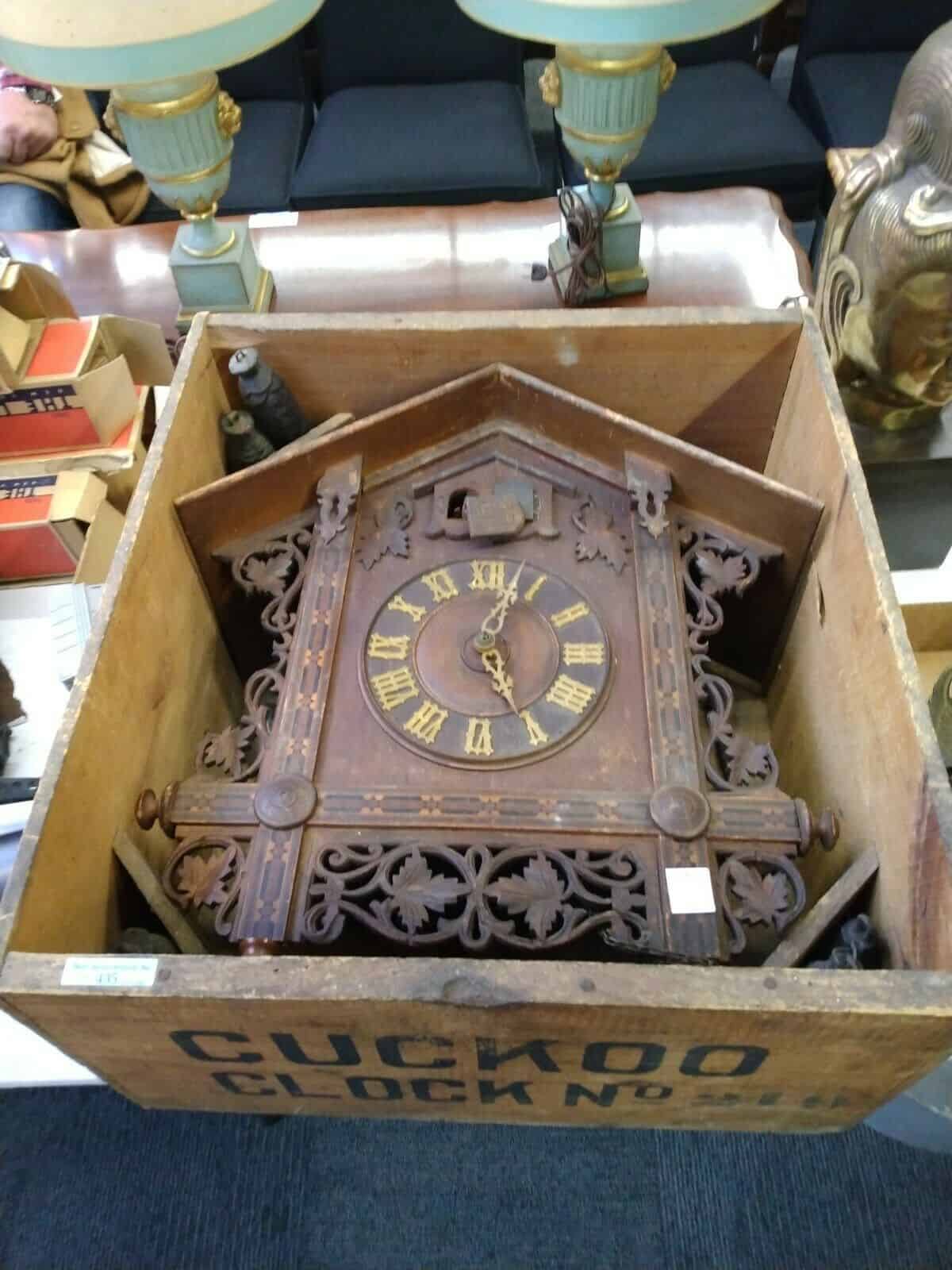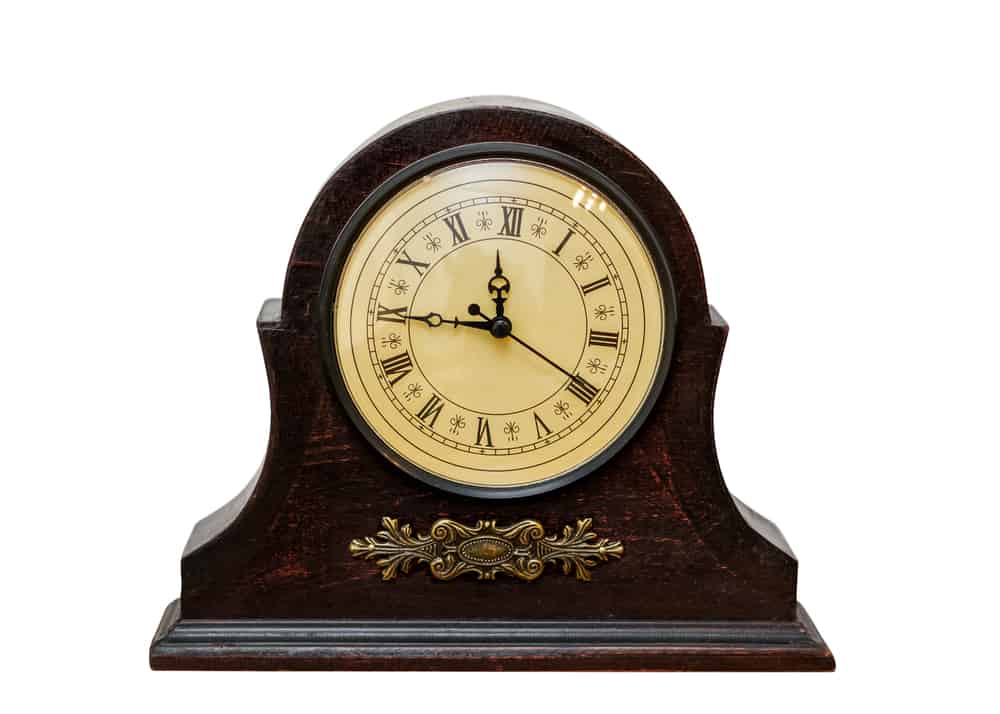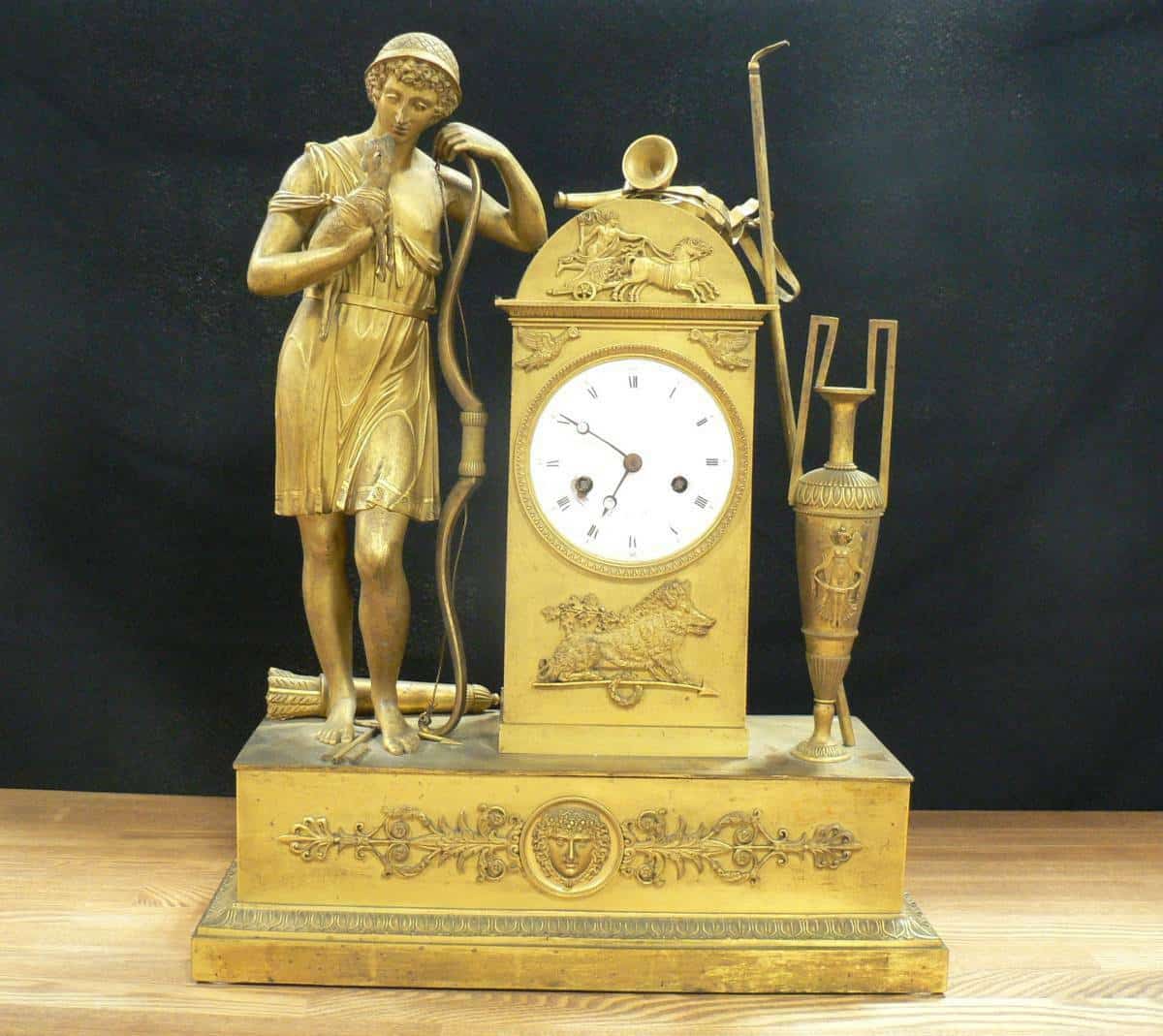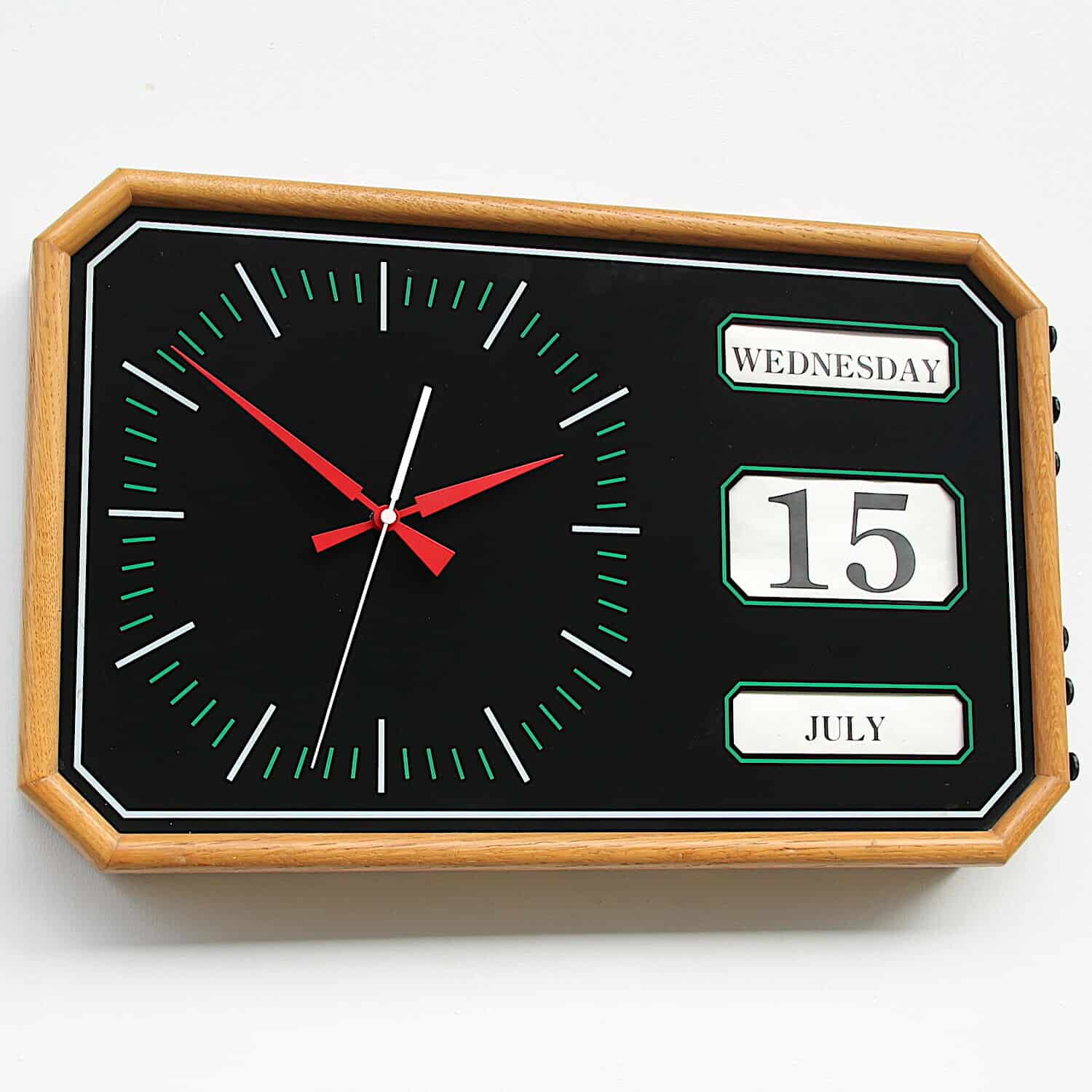Clocks are found everywhere, in every home and shop around the world. Hey, chances are you have a clock in the room you’re in, right now!
As well as telling us the time, clocks have another important function that more and more people are discovering every day – many of them are incredibly valuable!
From big, stately grandfather clocks, to small, cuckoo clocks and everything in between, antique clocks fetch huge prices from eager clock collectors around the world.
So if you have an old clock sitting on a shelf, or a ticking timepiece packed somewhere in your dusty attic, it’s time to take it out, examine it carefully, and see if your time truly is worth money.
Table of Contents
Manufacturers of antique clocks
As with any antique, the most important thing to find out first is who made it! There are two main categories to choose from: individual clockmakers, and clock companies.
Individual: There were many gifted American clockmakers throughout history, including Samuel Bispham, Simon Willard, Seth Thomas, and Daniel Burlap, to name but a few.
Many of these makers were commissioned by customers, meaning their clocks are tailor-made, and thus incredibly rare. Their signatures on a clock can transform its value at auction.
Clock Companies: Some of the most well-known clock manufacturers collect include The Waterbury Company, Chelsa Clock Company, and New Haven Clock Company.
Although clocks were often made in different parts, and sometimes by different people, it was common for companies to brand clocks in an attempt to gain notoriety.
You can find the most popular American maker’s marks here.
Any clocks imported after 1896 also had to have their country of origin printed on them. This database (translated from German) has a collection of international brands.
How can you tell if a clock is an antique or not?
Separating something new from an antique is very important. Many modern styles aim to imitate older things. Here are things you should be aware of:
Type of clock
Clocks often imitated popular furniture trends, and different types became popular at different times. Working out the type can help not only date the clock but also work out its value.
Some of the most common types include
- Spring-powered clocks
Spring-driven analogy clocks were the first handheld clocks. Cheap, affordable, and highly collectible, these clocks are some of the most commonly found antiques on auction sites.
Despite being common, they can still fetch amazing prices at auction. This Metal wound mechanical clock, for instance, is valued at up to $5,700.
- Battery-operated
It wasn’t until 1906 that the first battery-contained clock was produced. These became incredibly popular with homeowners across America because of their small size, accuracy, and affordable price.
Battery-operated clocks come in a wide range of styles and designs. This simple 1970s calendar clock can fetch an impressive $770 at auction.
- Strike movement

One of the signature features of a larger antique clock is its unique striking movement. Some clocks used a variety of bells, chime rods, a gong, or animated figurines to strike at specific times during the day.
Cuckoo clocks, for example, were made in the early 1700s and were known for their signature sound. They became incredibly popular in the 19th century in America, and range in value from $200 to $2,000.
Dial Face Design
The design of the clock’s dial can be further proof of its age, e.g. all grandfather clocks between 1680 and 1770 used brass dials.
In 1772 the first white dials were made in England, and grew in popularity until the 1880s. At this time, the corner of clock faces became much more decorated and complex.
Materials used
Wood: Originally, wood was used as early as the 1600s to hide the pendulum mechanism of a clock. From the early 1800s, wood was used as screws, and as a decorative casing for the clock. Many clockmakers used locally sourced wood – a great way of sourcing a clock’s origins.
Brass: In the 1820s, brass became cheaper to work with. Brass movements replaced virtually all wooden ones.
Ceramics: Allowed for more decoration to be hand-painted onto clock designs, from the mid-1600s onwards.
Paper: Used with mechanical clocks as a punching system, usually to record employees’ shifts. Dates from the early 1900s.
Plywood: Only used after 1905.
Bakelite Plastic: Thermoplastic became a popular material from the 1930s to after WW2. It was cheap and came in a variety of colors.
Serial number
Some big brands in clock making used serial numbers to identify production numbers. Though uncommon, they can prove useful in identifying your clock.
How do I know if my clock is valuable?
Here are some indications your clock is the real deal:
- Architectural elements: Valuable clocks imitated famous buildings. Look for pediments (triangular roof) or corness (decorated projection) on the casing.
- Operational: Although broken antique clocks are still worth money – working clocks fetch a higher price. Even if it ticks for only a short time, it may only require minimal servicing.
- Condition: The better the condition, the higher the value. Pay attention to two areas: the ‘works’, which are the inner mechanisms and springs, and the ‘case’, which holds the clock.
- History: Was it handed down through the family? Valuable clocks often have a history within the family.
- Manufacturer: Check the branding, signature, or logo. Some clockmakers are worth far more than others.
The National Association of Watch and Clock collectors has extensive resources on clock identification.
If you’re serious about collecting antique clocks and want expert advice, we highly recommend these comprehensive books:
- ‘The Clock and Watch Trademark Index by Karl Kochmann
- ‘Watchmakers & Clockmakers of the World’ by Brian Loomes
- Marking Modern Times: A History of Clocks, Watches, and Other Timekeepers in American Life by Alexis McCrossen
Where can I buy and sell an antique clock?
- Com– They have an extensive antique clock page recording some of the most valuable clocks on the market.
- Rubylane– with listings as high as $30,000, Rubylane is the destination for some of the world’s most expensive antique clocks.
- Etsy– an online marketplace with a big clock community. Some listings may be modern reproductions created to ‘look’ old.
- eBay– another online marketplace and informal price guide with a wide variety of clocks for sale.



I have a New England mantel clock but I do not know how to find the age and value of the clock. The registered serial number is 8509471. Please tell me how I can find any information about it. It is in working order
Thank you